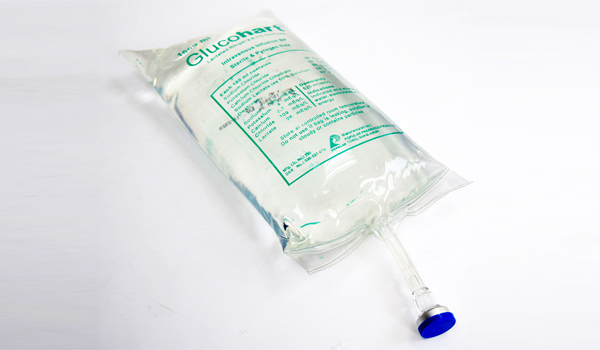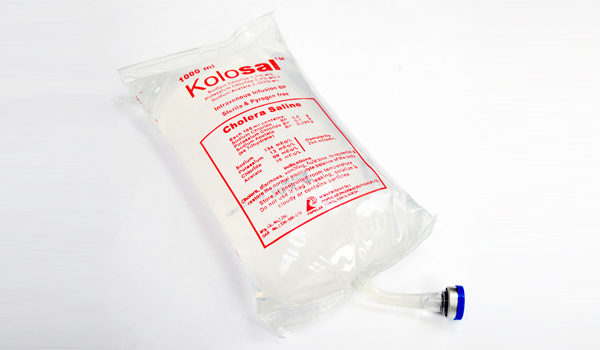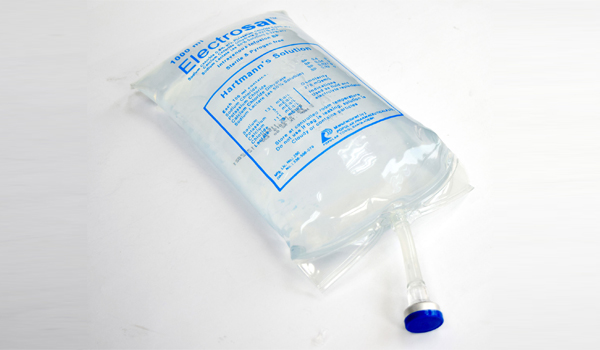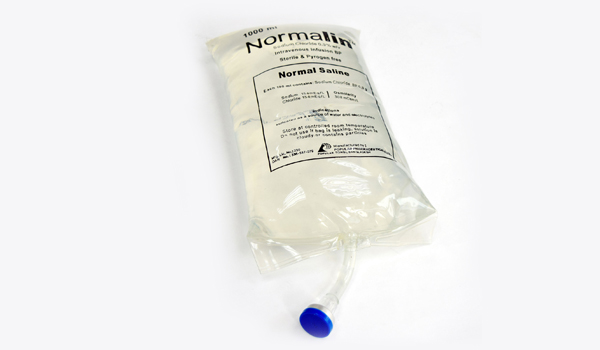Indication
Glucohart is indicated as a source of water, electrolytes and calories or as an alkalinizing agent.
Dosage & Administration
As directed by a physician. Dosage is dependent upon the age, weight and clinical condition of the patient as well as laboratory determinations. The dosage and constant infusion rate of intravenous dextrose must be selected with caution in pediatric patients, particularly neonates and low weight infants, because of the increased risk of hyperglycemia/hypoglycemia. Additives may be incompatible. Administration Procedure:
- 1. Check infusion set and infusion solution prior to use
- 2. Pull moderately to tear off the protective cover of the Eurohead
- 3. Hold lightly the Eurohead but not the bag
- 4. Open the flow regulator fully and hold the giving set on the top white area, but not the membrane venting region
- 5. Insert the spike of the administration set to the Eurohead and fit the connector of the administration set firmly to the needle
- 6. Gradually allow the fluid to flow down to the needle tip and close
- 7. Remove the protective cover of the needle
- 8. Locate the veinpuncture site and clean the site with an antiseptic solution, and then insert the needle (Picture-3)
- 9. Securely tape the puncture site
- 10. Securely tape the wings and tubing
- 11. Start infusion while adjusting drip speed
Precautions
Glucohart should be used with great care, if at all, in patients with congestive heart failure, severe renal insufficiency, and in clinical states in which there exists edema with sodium retention, hyperkalemia, severe renal failure, in conditions in which potassium retention is present, metabolic or respiratory alkalosis. Glucohart should not be administered simultaneously with blood through the same administration set because of the likelihood of coagulation. The intravenous administration of Glucohart can cause fluid and/or solute overloading resulting in dilution of serum electrolyte concentrations, overhydration, congested states, or pulmonary edema. The risk of dilutional states is inversely proportional to the electrolyte concentrations of the injection. The risk of solute overload causing congested states with peripheral and pulmonary edema is directly proportional to the electrolyte concentrations of the injection. In patients with diminished renal function, administration of Glucohart may result in sodium or potassium retention. Glucohart is not for use in the treatment of lactic acidosis. Clinical evaluation and periodic laboratory determinations are necessary to monitor changes in fluid balance, electrolyte concentrations, and acid base balance during prolonged parenteral therapy or whenever the condition of the patient warrants such evaluation. Excess administration may result in metabolic alkalosis. Caution must be exercised in the administration of Glucohart to patients receiving corticosteroids or corticotropin. Glucohart should be used with caution in patients with overt or subclinical diabetes mellitus. Pregnancy: Teratogenic effect and pregnancy category C. Glucohart should be given to a pregnant woman only if clearly needed. Pediatric Use: Safety and effectiveness of Glucohart in pediatric patients have not been established by adequate and well controlled trials. Nursing Mothers: It is not known whether this drug is excreted in human milk. Geriatric Use: Clinical studies of Glucohart did not include sufficient numbers of subjects aged 65 and over to determine whether they respond differently from younger subjects.

Related Products

Kolosal IV Infusion
Cholera SalineFluid & Electrolytes

Electrosal IV Infusion
Hartmann's SolutionFluid & Electrolytes

Normalin IV Infusion
0.9% NaClFluid & Electrolytes

Pedisol DS IV Infusion
10% Dextrose & 0.225% NaClFluid & Electrolytes
